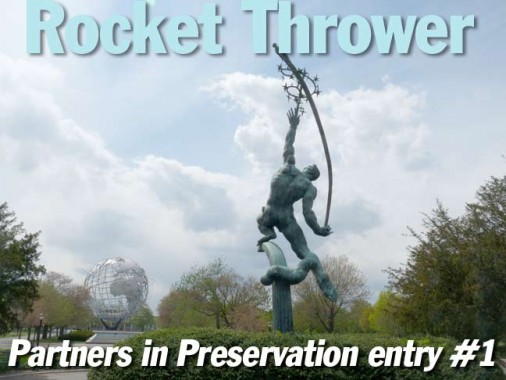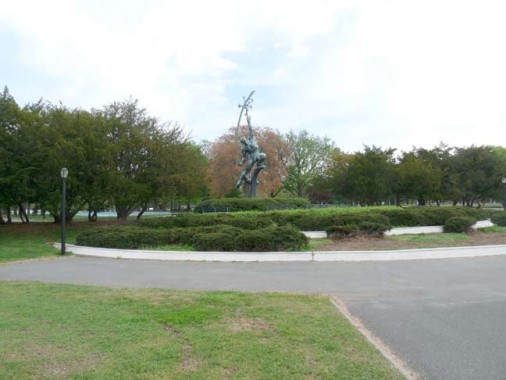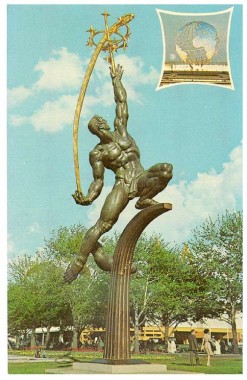
Through the partnership, American Express and the National Trust for Historic Preservation seek to increase the public’s awareness of the importance of historic preservation in the United States and to preserve America’s historic and cultural places. The program also hopes to inspire long-term support from local citizens for the historic sites at the heart of their communities.
From April 26 through May 21, 2012, local residents and people across the country are encouraged to vote for their favorite of 40 historic places throughout the five boroughs of New York City to receive preservation funding.
Voters are allotted one vote per day, which can be cast online in three ways: via the desktop website, the mobile website, or Facebook. Additionally, people can post personal stories and share photos on the Facebook page throughout the program. The four projects that receive the most public votes will have their grant requests fully funded, and the remainder of the $3 million in grants will be given to a number of the other sites after review by American Express, the National Trust for Historic Preservation and an advisory committee composed of civic and preservation leaders from New York.
The first such locale I selected was Donald DeLue‘s 43-foot high monumental work in Flushing Meadows-Corona Park, Rocket Thrower.
There he stands in what was once known as the Court of the Astronauts, his back to the Fountain of the Planets and facing the Unisphere. Rocket Thrower is one of a number of statues created for the Fair that had flight or space travel as a theme. The heroic-style sculpture depicts a giant throwing a rocket (in his right hand) through a network of stars (in his left). After the Fair opened in 1964, reviews of De Lue’s sculpture were decidedly mixed. NY Times art reviewer John Canaday called it a “most lamentable monster, making Walt Disney look like Leonardo Da Vinci.” Time, however, seems to treat massive public works with kindness. The Eiffel Tower received similar opprobrium when it was first built as well.
48 years after the Fair
In this postcard view, Rocket Thrower appears in his original bronze finish, and gilded rocket and stars.
I’m old enough to have attended the Fair in person, but my memories have faded and are more in the abstract. The monorail, the Pieta, the feathered orange hats, the Belgian waffles, the oddly-shaped lampposts that looked like the Rubik’s cubes that followed them, nonstop plays of “It’s a Small World” and in 1964, Beatles, Beatles, Beatles on radios everywhere.
After many years, Jeff Stanton’s World’s Fair site remains the most comprehensive.
What a beautiful world it will be
What a glorious time to be free
When Donald Fagen of Steely Dan had a hit with “I.G.Y.” (referencing the 1957-58 International Geophysical Year) in 1982, he wasn’t talking about the New York 1964-1965 World’s Fair in Flushing Meadows Corona Park in Queens, but with its elegiac references to now-forgotten or never-attained dreams of the future, he might as well have been.
In 1964, Rocket Thrower overlooks the Greyhound Glide-a-Ride, the surface equivalent of the monorail, shuttling tourgoers between exhibits, with futuristic pavilions in the background.
Postcard artists would sometimes take just a bit of license when showing Fair scenes. The fountain beds, known officially as Fountains of the Fair, are still in place but, of course, haven’t worked in years. The position of Rocket Thrower is correct, but the twin towers of the New York State Pavilion are in the wrong spot, since they should appear to the left of the Unisphere from here.
And at other times, a postcard artist would depict pure fantasy. The Unisphere doesn’t loom nearly as large at this distance from Rocket Thrower (though it’s still quite large) and the Thrower faces the Unisphere, not the way it’s shown here.
Rocket Thrower today
The World’s Fair was dismantled after the 1965 season, but a number of buildings and sculptures have been preserved from the Fair, such as Rocket Thrower, Hall of Science, Forms in Transit, and Freedom of the Human Spirit. The Hall of Science remains a popular attraction for kids of all ages, and the scale model of New York City contained in the old NY Pavilion is one of the city’s better-kept secrets.
The sculptures and statues, though, seem to have been left on their own, and oxidation has had its way, turning their bronze a ripe, light green. A grant from Partners in Preservation would go toward restoring its beautiful bronze finish (see postcard above) and shoring up slight cracks that have appeared over the years. The last time a major repair had to be done on Rocket Thrower was in 1989.
If you would like to see Rocket Thrower “up close and personal” street coordinates are impossible, so this is an easy way to find it:
From the #7 train, walk south on the boardwalk over Corona Yards and the Long Island Rail Road and descend a ramp to the Passarelle Plaza, which has a number of flagpoles and mosaic tablets surrounding it. Take the path to the left in the photo at top. Notice the yellow fire hydrants on the right as you walk the path. At the second one, turn right and walk straight ahead through the trees, skirting the playground on the left, and passing the Masonic Geoge Washington statue (also by DeLue) on the right. Rocket Thrower will soon be in view.
Rocket Thrower reaches for the stars and, in this case, a passing jet.
You can vote for Rocket Thrower‘s preservation, or other sites if you choose, at the Partners in Preservation website and from other devices. Remember, you get one vote per day.
I have partnered up with Partners in Preservation as a blog ambassador to help spread the word and raise awareness of select historical sites throughout the tri-state area. Though I am compensated for my time, I have not been instructed to express any particular point of view. All opinions expressed here are strictly my own.
4/27/12


